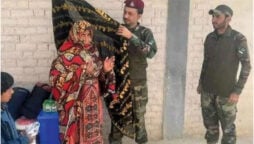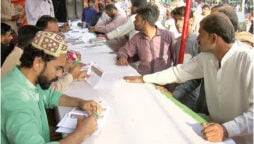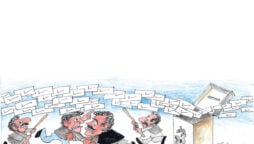
KP’s Massive Rehabilitation Plan
Official report says the government will need Rs 68.8 billion to restore flood losses
The government of Khyber Pakhtunkhawa (KP) province has launched a massive post-floods rehabilitation programme which will need at least Rs 68.8 billion to revive life and infrastructure destroyed by recent rains and flash floods, according to a damage assessment report compiled by the government.
The rains severely damaged cities and towns both in the north and south of the province, washing away bridges, destroying buildings and roads, and inundating standing crops on thousands of acres across the province.
According to estimates compiled by an assessment committee, at least Rs 18.6 billion would be needed to restore damaged roads and bridges, another Rs 19 billion to restore irrigation infrastructure, Rs 14 billion to revive agriculture (including compensations to affected people for damaged houses, loss of crops and livestock) while Rs 5 billion would be needed to sustain relief and emergency operations.
For the moment, the government has earmarked Rs 2.5 billion for relief and rehabilitation, out of which about Rs1.75 billion have already been released to the flood affected districts.
KP Chief Minister, Mehmood Khan, while chairing the first Flood Relief Fund Committee (FRFC) meeting on 6 September, directed immediate release of funds to the affectees and emphasized the need to involve international donors and stakeholder. The meeting, which was attended, among others, by FRFC technical advisor Dr Sana Nishtar, called for an effective strategy to channelise and spend relief funds to the maximum advantage of the affected communities.
The Provincial Disaster Management Authority (PDMA)’s latest data reveals that 289 people have died and 348 injured during the floods in KP. As many as 674,348 people have been displaced, 37,123 houses have been totally destroyed while 52,327 houses were partially damaged. The districts of Dera Ismail Khan, Tank, Swat, Upper Dir, Lower Dir and Nowshera have been the worst hit, while damages caused in Maneshra, Swabi, Upper Chitral and Lower Chitral are estimated to be from medium to mild.
According to the report, the rains damaged or completely destroyed about 73 bridges, measuring about 3,504 meters. These will need an estimated Rs 2,283 million for restoration. District Swat remained the worst hit with 29 bridges, followed by Upper Dir with 16, Manshera with six, Lower Dir with five, Lower Chitral with four, Lower Kohistan and Haripur with three each, while one bridge each was destroyed in Dera Ismail Khan, Bannu and Buner.
About 1,455 kilometers of roads have been damaged or, in some areas, completely washed away, according to the report.
The Health Department losses show that about 91 health facilities have been damaged, about 60 of them partially. Dera Ismail Khan is on top with 55 damaged facilities, Lakki Marwat with six, Kohistan with five, Shangla with four, Nowshera and Karak with two each, while 17 facilities are located elsewhere in the province.
Regarding the education infrastructure, provincial Secretary Education, Mutasim Billah, has shared details according to which around 1,100 school buildings have been damaged. According to him, 126 buildings have been completely destroyed while 925 have suffered partial damage. He clarified, however, that cumulative losses may run higher as many partially damaged school buildings may not be restorable.
Meanwhile, more than 477 irrigation channels across KP have been damaged. Their restoration is estimated to cost Rs 19,162 million. Chitral remains the worst hit with 146 damaged channels, followed by Swat with 106, Bannu with 74, Charsadda with 56, Dir with 46, Hazara Division with 34, Mardan with six, Swabi and Dera Ismail Khan with four each, and Peshawar with one.
On its part, the agriculture sector is estimated to have suffered losses of over Rs 14 billion. It will need Rs 3 billion to restore 2,448 water courses and storage tanks alone. It will also need to compensate the farming communities who lost some 97,063 metric tonnes of standing crops worth Rs 9.16 billion, in addition to the loss of animals and cattle which is estimated at around Rs 1.5 billion. The agriculture research stations have also suffered damages worth Rs 300,000, while another Rs 150,000 will be needed to restore 42 water conservation structures.
Director General PDMA, Sharif Hussain, told Bol News that they have so far released Rs 1.75 billion for relief and rehabilitation, adding that quick compensation for life and material losses is the government’s top priority. “We need to help people get back into their routines, and we are doing this by providing food and shelter to displaced people, distributing medicines and laying down measures for epidemic control,” he said.
Advisor to KP Chief Minister, Barrister Muhammad Ali Saif, says that after initial rescue operations, the government’s priority has been to restore communication links so as to link up with the affected populations. “So far 665 kilometers of roads have been restored, and temporary bridges have been installed to connect the affected areas with the mainstream,” he said.
He says reaching out to the affected population and delivering aid to them is a herculean task, but it has been made possible due to a collective effort by the government, the armed forces, private charities and relief workers.
“The lesson learnt from this disaster is that encroachment on lands along rivers and natural water channels will not be allowed any more, and suitable legislation will be introduced to legalise action against such encroachments,” he said.
He also underlined the need for dams and large water reservoirs to prevent rainwater from going to waste. “The government’s strategy of strengthening river embankments has saved precious lives in Nowshera, so it’s the KP government’s priority to extend such measures to other areas besides laying down plans for big dams.”
Catch all the National Nerve News, Breaking News Event and Latest News Updates on The BOL News
Download The BOL News App to get the Daily News Update & Live News.












 Read the complete story text.
Read the complete story text. Listen to audio of the story.
Listen to audio of the story.